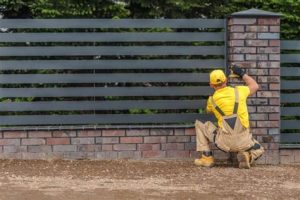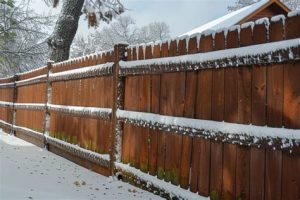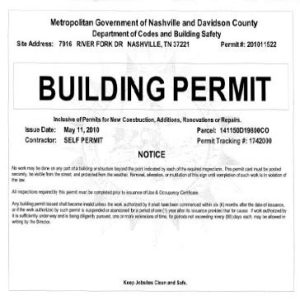Explore the essentials of permitted fence installations, covering costs, benefits, risks, and a comparison of long-term expenses for informed decision-making.When it comes to installing a fence, the decision between opting for a permitted installation versus a non-permitted one can significantly impact not just your property aesthetics, but also your wallet in the long run. Understanding the nuances of each option is crucial, as permitted fence installations often come with distinct benefits and costs that can safeguard your investment. On the other hand, non-permitted installations might seem like an appealing way to save money upfront, but they come with a set of risks that could lead to greater financial burdens later. In this blog post, we’ll dive deep into the details of permitted and non-permitted fence installations, comparing their associated costs and potential long-term implications to help you make an informed decision. Whether you’re a seasoned homeowner or a first-time property buyer, this guide aims to clarify your choices and set you on the right path.
Understanding Permitted Fence Installations
When it comes to fence installations, understanding the concept of permitted fences is essential. A permitted fence is one that complies with the local zoning laws and building codes. These regulations are designed to ensure public safety, preserve the appearance of neighborhoods, and protect the rights of property owners. Without adhering to these standards, homeowners risk fines and costly removal of non-compliant structures.
Obtaining a permit usually involves submitting your fence plans to local authorities. The approval process may vary based on location but typically includes a review to confirm that your planned installation meets height, design, and boundary regulations. In many cases, you’ll need to provide detailed plans and may even be required to notify neighbors of your intentions. The complexity of this requirement is dependent on the locality’s specific laws.
Building a permitted fence offers various benefits. For instance, not only does it ensure compliance with legal standards, but it also enhances the overall value of your property.
Costs Associated with Permitted Fence Installations
When considering the installation of a fence on your property, it’s crucial to understand the expenses related to permitted fence installations. Unlike non-permitted options, which may appear cheaper initially, permitted installations can lead to more predictable long-term costs and benefits.
One of the primary costs associated with a permitted fence installation is the permit fee itself. Many municipalities require homeowners to obtain a permit before erecting a fence, and these fees can vary based on location and the size of the project.
| Permit Type | Average Cost |
|---|---|
| Residential Fence Permit | $50 – $150 |
| Commercial Fence Permit | $100 – $300 |
| Variances (if needed) | $200 – $1,000 |
In addition to the permit fees, there are costs associated with hiring a professional contractor familiar with local zoning laws. This ensures that the fence meets all regulations and standards, ultimately protecting you from potential fines or removal in the future. Furthermore, quality materials, often required for permitted installations, can add to your overall expenses but offer superior durability and aesthetics.
Lastly, ongoing costs must be considered. Maintaining a permitted fence installation can be more favorable, as stakeholders are less likely to face sanctions or the need for replacement due to violations, which often happens with non-permitted options. Overall, the costs associated with permitted fence installations can lead to greater peace of mind and appropriate budgeting for homeowners.
Benefits of Permitted Fence Installations
When it comes to deciding whether to install a fence on your property, one important consideration is whether to pursue a permitted installation or an unpermitted one. Permitted fence installations offer several advantages that can save homeowners time, money, and hassle in the long run.
- Legal Protection: A permitted fence ensures that your installation complies with local regulations and zoning laws, protecting you from potential legal issues.
- Increased Property Value: A properly permitted fence can enhance the aesthetic appeal and value of your property, making it more attractive to potential buyers.
- Insurance Benefits: Many insurance companies prefer or even require permitted installations. Having a fence that meets local codes can help in claims and reduce liabilities.
- Community Trust: By adhering to local regulations, you demonstrate a commitment to community standards, fostering trust with neighbors and local authorities.
- Long-Term Savings: Although the initial cost of obtaining a permit may seem like an additional expense, the potential costs associated with fines, removal of unpermitted fences, or other legal troubles can far exceed this investment.
Choosing a permitted fence installation promotes peace of mind. Homeowners can rest easy knowing that their installation has been conducted safely and legally. Any alterations or repairs will also be easier to manage if you start with a solid, compliant foundation.
In conclusion, the benefits of permitted fence installations significantly outweigh the few extra steps involved in obtaining a permit. It is a proactive approach to home improvement that therefore fosters a safer and more compliant living environment.
Risks of Non-Permitted Fence Installations
When considering fence installations, opting for non-permitted setups may seem like a cost-effective solution at first glance. However, the risks associated with this choice can have significant implications down the line. Here are some key considerations to keep in mind.
One of the most pressing risks of non-permitted fence installations is the potential for legal action. If a fence is installed without proper permits, property owners may face penalties from local authorities. This can result in fines and the requirement to remove or alter the installation, leading to additional costs and labor.
Moreover, non-permitted fences may lead to disputes with neighbors or even community associations. A lack of compliance with local zoning laws may trigger objections from neighbors who could potentially challenge the validity of the installation, causing further complications and stress. Furthermore, in the event of property disputes or damage claims, having an unpermitted fence could weaken your position legally.
| Risks of Non-Permitted Fences | Consequences |
|---|---|
| Legal Fines | Financial penalties imposed by local authorities |
| Order to Remove/Alter Fence | Additional costs for labor and materials |
| Neighborhood Disputes | Potential legal battles with neighbors |
In summary, while the allure of saving money by skipping proper permits may be tempting, the long-term consequences of non-permitted fence installations can far outweigh the initial savings. Homeowners must weigh these risks carefully to make informed decisions regarding their property investments.
Comparing Long-Term Costs of Both Options
When considering fence installations, one must evaluate not just the initial costs, but also the long-term financial implications of both permitted and non-permitted installations. While a non-permitted fence may appear to save money initially, the hidden costs can add up significantly over time.
Permitted fence installations often come with upfront costs such as permits, inspections, and compliance with local regulations. However, these installations generally provide benefits that can offset these initial expenses. For example, a properly permitted fence may enhance property value, reduce the risk of fines, and lead to savings on potential liability issues.
In contrast, non-permitted fences may seem more budget-friendly at first glance, but these options carry risks that can lead to unexpected expenses. If a neighbor disputes the fence, or if local authorities require its removal, homeowners could face substantial costs. Over time, the total cost of ownership for a non-permitted fence can surpass that of a compliant installation.
Key Takeaway: Investing in a permitted fence not only ensures compliance but can also avert unforeseen financial repercussions.
| Cost Factors | Permitted Fence | Non-Permitted Fence |
|---|---|---|
| Initial Installation | Higher due to permits | Lower initially |
| Maintenance | Standard maintenance costs | Potentially higher due to replacements |
| Property Value | Can increase | May decrease |
| Fines/Renovation | None expected | Possible fines or costly removal |
Frequently Asked Questions
What are permitted fence installations?
Permitted fence installations are those that comply with local regulations and zoning laws, requiring a permit before construction begins.
What are non-permitted fence installations?
Non-permitted fence installations are fences built without obtaining the necessary permits, often violating local building codes or regulations.
What are the primary costs associated with permitted installations?
The primary costs associated with permitted installations include permit fees, materials, labor costs, and potential inspections by local authorities.
What costs can arise from non-permitted installations?
Costs for non-permitted installations can include fines or penalties, costs for retrofitting the fence to meet regulations, and possible legal fees.
How can permitting affect the overall fence installation budget?
Obtaining permits typically adds an upfront cost but can save money in the long run by avoiding fines, required modifications, or removal of the fence.
Are there any benefits to choosing permitted installations over non-permitted ones?
Yes, benefits of permitted installations include legal protection, increased property value, compliance with safety standards, and peace of mind.
What should homeowners consider before starting a fence installation?
Homeowners should consider local regulations, the necessity of permits, budget constraints, and the potential implications of non-compliance with local laws.





